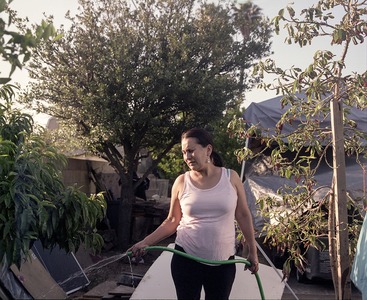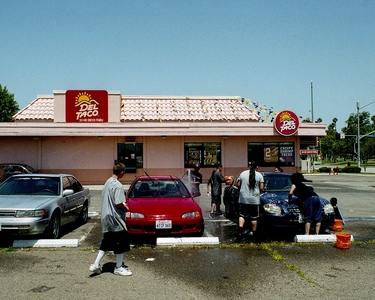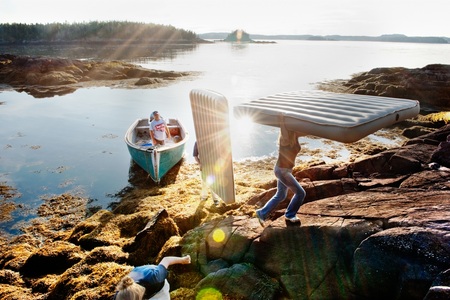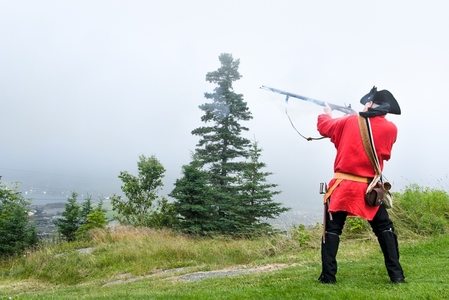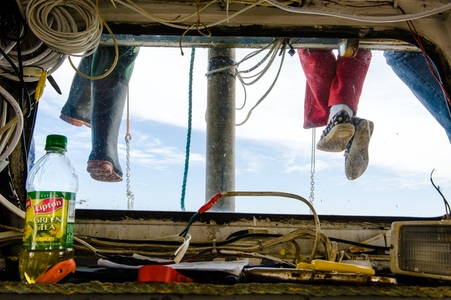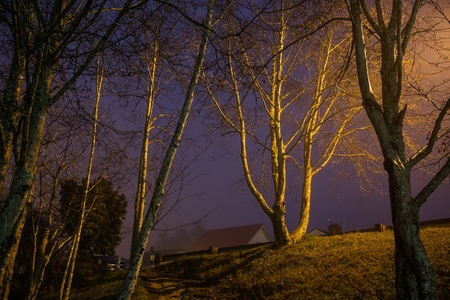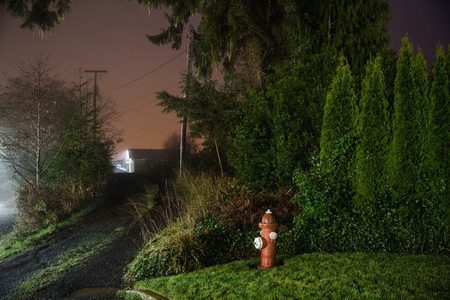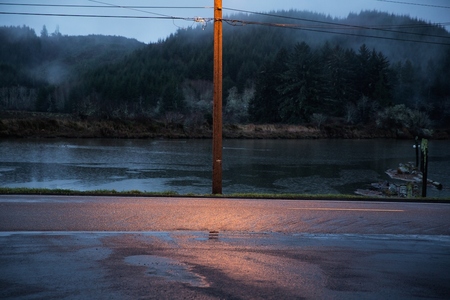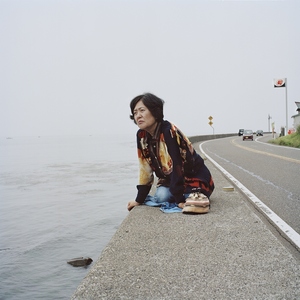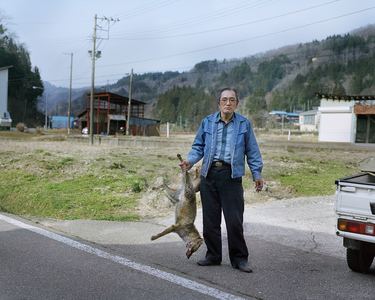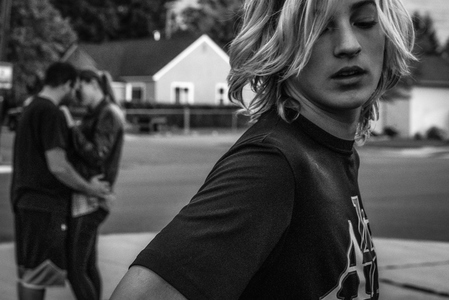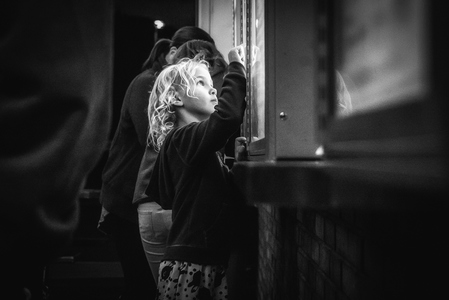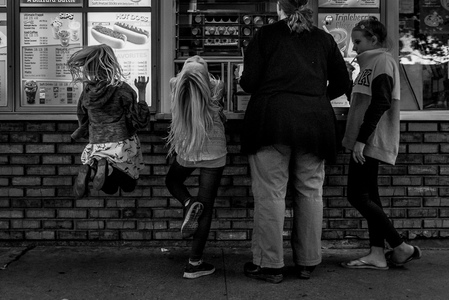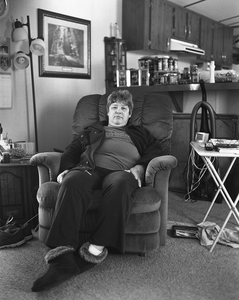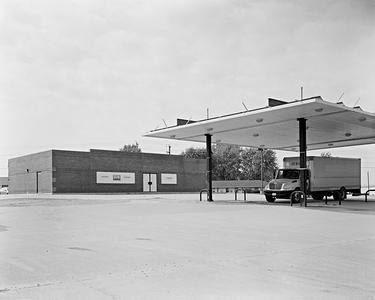HOMETOWN-Curator Barb Peacock > Group Exhibition #2
Group Exhibition #2
SERGIO PALOMINO by William Camargo
(click on image for larger view)
(click on image for larger view)
Informed by his parent’s own immigration from Mexico in the early 80’s, William Camargo explores notions of immigration, identity, and culture of the people he meets and is close to, through the medium of portrait photography and urban landscapes.
He photographs in cities where immigrants from Mexico came to, his projects have explored issues that have risen through the lack of representation in a city with at least half of the population is of Mexican decent and other cities in which an influx of Mexican immigrants have changed the very landscape of the city.
In a project called “Anaheim: Photographs from the Happiest City on Earth,” he unearthed how police shootings of unarmed Latino men created an abrupt feeling of a tale of two cities, usually divided by race and wealth, one in which he himself grew up in.
In a current project he will amass a number of portraits and landscapes at an attempt to create a photo archive of the Mexico/U.S relationship through the people who have immigrated to what they call in Mexico “El Norte” always starting with the documentation and portraiture of his two parents who are from Guerrero, Mexico. Using inspiration from other Latino artist like Pattsi Valdez, Luis Jimenez and John Valadez he heroize his subjects when most of them are belittled.
In interviewing the subjects of his photographs the words “del otro lado” came up various times, suggesting their disconnect with the very land their ancestors once owned. A feeling that many immigrants feel to this day despite the decades of being in “El Norte.” A constant battle is felt in the didactic portraits and landscapes of his photographs.
His attempt is to show a humanization of the people and places he documents that are spoken about daily by political rhetoric while the meanwhile battling with his own feelings of disconnection of the very land he was born in.
A past photography fellow at The Chicago Reporter in Chicago, Illinois, Camargo attended the 2015 New York Times Portfolio Review in New York, NY.
Camargo has traveled to Mexico and Guatemala various times to work as a foreign correspondent photojournalist, working at the border and photographing his first conflict in rural Guerrero in 2013.
He plans to self-publish a book about his hometown in Anaheim, California, about the growing Latino population that surrounds the city that houses Disneyland.
His work as appeared in several publications including Time, Business Insider, The Wall Street Journal, The Chicago Tribune, The Guardian, and others.
His photographs have also been displayed in art galleries in Los Angeles County, Orange County and Chicago, including DNJ Gallery at Bergamot Station, Las Artelitas in Chicago and USC's department of Urban Education in Los Angeles.
Education-
California State University, Bachelors of Fine Art, 2014
Fullerton College, Associates in Photography, 2010
Solo Exhibitions-
2015 “Urban Education”, USC’s Department of Education, Los Angeles.
2014 “Photographs from the Happiest City on Earth: Anaheim”, EXIT Gallery, Fullerton, CA
2012 “Monte Negro a Photographic Muse, South End Gallery, Fullerton.
Selected Group Exhibitions-
2017 “Future Now/Futuro Ahora, Loisaida Center, New York
2016 “Dia De Los Muertos,” Villarte, Chicago
2015 “Explorations”, DNJ Gallery, Santa Monica, CA
Awards and Prizes-
2016 I.P.A, Best Portrait Photo
2015 I.P.A, Finalist, Best Documentary Photography
New York Times Portfolio Review, Participant, New York
2014
Bibliography
chicagoreporter.com/three-faces-of-immigration
businessinsider.com/heres-why-the-city-that-houses-disneyland-is-not-the-happiest-place-on-earth-2015-8
www.telemundochicago.com/noticias/local/William -Camargo_-fot_grafo-y-orgullosamente-mexicano_TLMD---Chicago-392885981.html
www.eluniversal.com.mx/articulo/english/2016/09/19/mexican-photographer-works-book-about-immigrants-contributions-us
www.williamcamargo.com
He photographs in cities where immigrants from Mexico came to, his projects have explored issues that have risen through the lack of representation in a city with at least half of the population is of Mexican decent and other cities in which an influx of Mexican immigrants have changed the very landscape of the city.
In a project called “Anaheim: Photographs from the Happiest City on Earth,” he unearthed how police shootings of unarmed Latino men created an abrupt feeling of a tale of two cities, usually divided by race and wealth, one in which he himself grew up in.
In a current project he will amass a number of portraits and landscapes at an attempt to create a photo archive of the Mexico/U.S relationship through the people who have immigrated to what they call in Mexico “El Norte” always starting with the documentation and portraiture of his two parents who are from Guerrero, Mexico. Using inspiration from other Latino artist like Pattsi Valdez, Luis Jimenez and John Valadez he heroize his subjects when most of them are belittled.
In interviewing the subjects of his photographs the words “del otro lado” came up various times, suggesting their disconnect with the very land their ancestors once owned. A feeling that many immigrants feel to this day despite the decades of being in “El Norte.” A constant battle is felt in the didactic portraits and landscapes of his photographs.
His attempt is to show a humanization of the people and places he documents that are spoken about daily by political rhetoric while the meanwhile battling with his own feelings of disconnection of the very land he was born in.
A past photography fellow at The Chicago Reporter in Chicago, Illinois, Camargo attended the 2015 New York Times Portfolio Review in New York, NY.
Camargo has traveled to Mexico and Guatemala various times to work as a foreign correspondent photojournalist, working at the border and photographing his first conflict in rural Guerrero in 2013.
He plans to self-publish a book about his hometown in Anaheim, California, about the growing Latino population that surrounds the city that houses Disneyland.
His work as appeared in several publications including Time, Business Insider, The Wall Street Journal, The Chicago Tribune, The Guardian, and others.
His photographs have also been displayed in art galleries in Los Angeles County, Orange County and Chicago, including DNJ Gallery at Bergamot Station, Las Artelitas in Chicago and USC's department of Urban Education in Los Angeles.
Education-
California State University, Bachelors of Fine Art, 2014
Fullerton College, Associates in Photography, 2010
Solo Exhibitions-
2015 “Urban Education”, USC’s Department of Education, Los Angeles.
2014 “Photographs from the Happiest City on Earth: Anaheim”, EXIT Gallery, Fullerton, CA
2012 “Monte Negro a Photographic Muse, South End Gallery, Fullerton.
Selected Group Exhibitions-
2017 “Future Now/Futuro Ahora, Loisaida Center, New York
2016 “Dia De Los Muertos,” Villarte, Chicago
2015 “Explorations”, DNJ Gallery, Santa Monica, CA
Awards and Prizes-
2016 I.P.A, Best Portrait Photo
2015 I.P.A, Finalist, Best Documentary Photography
New York Times Portfolio Review, Participant, New York
2014
Bibliography
chicagoreporter.com/three-faces-of-immigration
businessinsider.com/heres-why-the-city-that-houses-disneyland-is-not-the-happiest-place-on-earth-2015-8
www.telemundochicago.com/noticias/local/William -Camargo_-fot_grafo-y-orgullosamente-mexicano_TLMD---Chicago-392885981.html
www.eluniversal.com.mx/articulo/english/2016/09/19/mexican-photographer-works-book-about-immigrants-contributions-us
www.williamcamargo.com
SUMMER'S EVENING by Susan Lapides
(click on image for larger view)
Susan Lapides says of this work, "St. George is a town of 2,800 people and not a single traffic light. It is situated on the Bay of Fundy in the Canadian province of New Brunswick. Recognized for its magnificence, the Bay is known for its large tides and dramatic skies. The families and children still create memories of summer like their ancestors before them.
In this series of photographs, I explore the relationship of the community to their landscape, both natural and artificial, for work and for play. With these photographs, I have tried to capture the collective memory of the people of St. George and create an enduring document of the region.
One of the pioneers of the farm-raised salmon industry, St. George’s fishing industry is thriving, creating employment for many residents and more recently for people around the globe.
As the catch of herring and cod has diminished from overfishing, independent fishermen now scuba dive to fill the demands of the worldwide markets of sea urchins, periwinkles, seaweed, and lobsters.
St. George isn’t a tourist town, but it has a few landmarks that are popular stops as people pass through on their way to the Deer Island ferry or other regions of the Canadian “Maritimes” (New Brunswick, Nova Scotia, and PEI). These were on the old Route 1, which is now a four-lane highway with exits. Hopefully these stops can continue to draw the locals and the passers through."
Susan Lapides’s work focuses on people, culture, and place. An accomplished fine art photographer with a strong background in editorial photography, Lapides is a sensitive and passionate visual storyteller. Her subjects range from portraits of visionaries to the fishing communities of New Brunswick, Canada.
Lapides is a graduate of Tufts University and the School of the Museum of Fine Arts. As a professional photographer, she worked on assignment for many major clients, such as the New York Times, Smithsonian Magazine, Life, Time, Forbes, US News & World Report, Condé Nast Traveler, People, Unicef, Harvard University Art Museums, Worcester Art Museum, and American Repertory Theater.
Two of the highlights of her early professional career were photographing President Barack Obama, then the first African American editor of the Harvard Law Review and photographing Rose Kennedy on the occasion of her 91st birthday.
In 2016, Lapides had a solo exhibition of her series, Western Isles of the Bay of Fundy at the Saint John Arts Centre in New Brunswick, Canada. In July 2017 Sunbury Shores in St. Andrews, New Brunswick will exhibit the series.
Lapides has shown her work widely in group exhibitions at the Danforth Art Museum (Framingham, MA), Rayko Photo Center (San Francisco, CA), Photoplace Gallery (Middlebury, VT), Lesley University (Boston, MA), Panopticon Gallery (Boston, MA), Nave Gallery (Somerville, MA), Cambridge Art Association (MA) and also in a solo exhibition at the Griffin Museum of Photography (Winchester, MA).
She has also won several awards for her photography including several gold awards at the ASMP Big Picture Shows and an award from the Advertising Photographers of America. Her work is in several private and public collections. Lapides resides in Boston, Massachusetts and St. George in New Brunswick, Canada.
www.susanlapides.com
(click on image for larger view)
Susan Lapides says of this work, "St. George is a town of 2,800 people and not a single traffic light. It is situated on the Bay of Fundy in the Canadian province of New Brunswick. Recognized for its magnificence, the Bay is known for its large tides and dramatic skies. The families and children still create memories of summer like their ancestors before them.
In this series of photographs, I explore the relationship of the community to their landscape, both natural and artificial, for work and for play. With these photographs, I have tried to capture the collective memory of the people of St. George and create an enduring document of the region.
One of the pioneers of the farm-raised salmon industry, St. George’s fishing industry is thriving, creating employment for many residents and more recently for people around the globe.
As the catch of herring and cod has diminished from overfishing, independent fishermen now scuba dive to fill the demands of the worldwide markets of sea urchins, periwinkles, seaweed, and lobsters.
St. George isn’t a tourist town, but it has a few landmarks that are popular stops as people pass through on their way to the Deer Island ferry or other regions of the Canadian “Maritimes” (New Brunswick, Nova Scotia, and PEI). These were on the old Route 1, which is now a four-lane highway with exits. Hopefully these stops can continue to draw the locals and the passers through."
Susan Lapides’s work focuses on people, culture, and place. An accomplished fine art photographer with a strong background in editorial photography, Lapides is a sensitive and passionate visual storyteller. Her subjects range from portraits of visionaries to the fishing communities of New Brunswick, Canada.
Lapides is a graduate of Tufts University and the School of the Museum of Fine Arts. As a professional photographer, she worked on assignment for many major clients, such as the New York Times, Smithsonian Magazine, Life, Time, Forbes, US News & World Report, Condé Nast Traveler, People, Unicef, Harvard University Art Museums, Worcester Art Museum, and American Repertory Theater.
Two of the highlights of her early professional career were photographing President Barack Obama, then the first African American editor of the Harvard Law Review and photographing Rose Kennedy on the occasion of her 91st birthday.
In 2016, Lapides had a solo exhibition of her series, Western Isles of the Bay of Fundy at the Saint John Arts Centre in New Brunswick, Canada. In July 2017 Sunbury Shores in St. Andrews, New Brunswick will exhibit the series.
Lapides has shown her work widely in group exhibitions at the Danforth Art Museum (Framingham, MA), Rayko Photo Center (San Francisco, CA), Photoplace Gallery (Middlebury, VT), Lesley University (Boston, MA), Panopticon Gallery (Boston, MA), Nave Gallery (Somerville, MA), Cambridge Art Association (MA) and also in a solo exhibition at the Griffin Museum of Photography (Winchester, MA).
She has also won several awards for her photography including several gold awards at the ASMP Big Picture Shows and an award from the Advertising Photographers of America. Her work is in several private and public collections. Lapides resides in Boston, Massachusetts and St. George in New Brunswick, Canada.
www.susanlapides.com
UPHILL by Sue Bailey
(click on image for larger view)
(click on image for larger view)
Sue Bailey says of her work, "I began this series as I awoke from a dream. It was early in the morning, at the end of night. My sister and I had driven to the coast of Oregon, where we grew up, though we didn’t know exactly where the hotel was that we got for the night. Oddly, it turned out to be the town I think of as my hometown, Reedsport. I ran out to shoot in the fog and thus began my series, “Oregon”. This series expresses my mixed feelings about my childhood. I joke that you can tell from this series that I didn’t have a very happy childhood. However, it all happened within the incredible beauty of the Oregon coastline. So I express the mixed feelings of pain and beauty and the smashup of both within these photographic images. This series and so much of my work convey the complexity I feel about my origins and the world – that the light and dark coexist, but in the end they can live together harmoniously and create beauty together.
I was raised in Oregon, but grew up in New York, where I still reside. Both are a part of me and both inform my work. I have an appreciation for nature from Oregon and an appreciation for art and culture from New York. After graduating from Cooper Union in NYC with a BFA, I worked for a photographer (Alfred Wertheimer) who, while a photojournalist, was truly an artist. I sold his book (Elvis 56), worked in editorial and learned much.Then I entered the corporate world (HBO) and was there a very long time. I became a Vice President of Creative Services and the one thing I can say is that although I was selling “TV”– I was selling good TV that I believed in (think Sopranos, The Wire, Deadwood, etc.) It was TV that changed the entire television industry. I won many industry awards, both as a Writer/Producer and as a Creative Director/VP.
I co-authored a book called, “Grave Expectations: Planning The End Like There’s No Tomorrow”, a funny (no kidding) book on planning your own funeral and making it a final, joyful, blow-out expression of you and your life. We did the Today Show, NPR, etc.
Since leaving HBO, I have pursued photography exclusively, taking courses at ICP, the International Center of Photography in New York City. (Vice President at HBO in Creative Services, left in 2008. Numerous Industry On Air Promotion Awards both as a Writer/Producer and Creative Director/VP)"
Continuing study of photography at the ICP, The International Center of Photography, NYC.
www.suebaileyphotography.com
I was raised in Oregon, but grew up in New York, where I still reside. Both are a part of me and both inform my work. I have an appreciation for nature from Oregon and an appreciation for art and culture from New York. After graduating from Cooper Union in NYC with a BFA, I worked for a photographer (Alfred Wertheimer) who, while a photojournalist, was truly an artist. I sold his book (Elvis 56), worked in editorial and learned much.Then I entered the corporate world (HBO) and was there a very long time. I became a Vice President of Creative Services and the one thing I can say is that although I was selling “TV”– I was selling good TV that I believed in (think Sopranos, The Wire, Deadwood, etc.) It was TV that changed the entire television industry. I won many industry awards, both as a Writer/Producer and as a Creative Director/VP.
I co-authored a book called, “Grave Expectations: Planning The End Like There’s No Tomorrow”, a funny (no kidding) book on planning your own funeral and making it a final, joyful, blow-out expression of you and your life. We did the Today Show, NPR, etc.
Since leaving HBO, I have pursued photography exclusively, taking courses at ICP, the International Center of Photography in New York City. (Vice President at HBO in Creative Services, left in 2008. Numerous Industry On Air Promotion Awards both as a Writer/Producer and Creative Director/VP)"
Continuing study of photography at the ICP, The International Center of Photography, NYC.
www.suebaileyphotography.com
ONLOOKER by Seiya Bowen
(click on image for larger view)
(click on image for larger view)
Seiya Bowen says of his work, "Rural towns in Japan are in crisis. The traditional lifestyle in these fishing and agricultural communities can no longer support the younger generations who are drawn to larger cities for economic and cultural reasons.
This migration left these desolate towns populated by a handful of older very traditional people, who have lived in these towns their entire lives, as their parents before them had done.
Each summer for over a decade I return to my childhood home in Japan, and with every visit I am further aware of the diminishing town and the recent developments of infrastructure.
I watch as mountains are being excavated to construct highways and bullet trains through my home town in order to make the commute between larger cities more efficient.
The construction of these concrete passages have scarred the landscape permanently and in short time, my home will disappear.
Conscious of the undeniable fate of my home I am photographing this town to preserve and remember its existence- both personally and culturally.
The photographs examine the deterioration of a once active community and the new modern edifice that are built in its wake."
Seiya Bowen graduated from the University of New Mexico with a BFA in 2014. Bowen’s work deals with personal identity and the cultural and social framework that coerce personal distinctiveness. He has been exhibited both nationally and internationally in publication and venues such as SITE Santa Fe Museum, and Center for Fine Arts Photography, Fraction Magazine and PDN. Bowen currently resides in Albuquerque, New Mexico.
EXHIBITION AND AWARDS-
Verge: Shaping the Photograph, John Sommers Gallery, University of New Mexico, Albuquerque, NM 2016
30 UNDER 30, Santa Fe Community Gallery, Santa Fe, NM 2015
SITE Scholars Alumni Exhibition, SITE Santa FE, NM 2015
SITE Scholar Exhibit, Peters Project, Santa Fe, NM 2015
Portraits 2015 with Juror Debra Klomp Ching, Center for Fine Arts Photography, Fort Collins, CO 2015
PUBLICATIONS-
Aint Bad Magazine, 2016
The New Frame, Australia, 2016
Fraction Magazine, 2015
Fotografia Magazine, 2015
Santa Fe New Mexican, Art Review, Santa Fe, NM 2015
Education:
BFA University of New Mexico, 2014
www.seiyabowen.com
This migration left these desolate towns populated by a handful of older very traditional people, who have lived in these towns their entire lives, as their parents before them had done.
Each summer for over a decade I return to my childhood home in Japan, and with every visit I am further aware of the diminishing town and the recent developments of infrastructure.
I watch as mountains are being excavated to construct highways and bullet trains through my home town in order to make the commute between larger cities more efficient.
The construction of these concrete passages have scarred the landscape permanently and in short time, my home will disappear.
Conscious of the undeniable fate of my home I am photographing this town to preserve and remember its existence- both personally and culturally.
The photographs examine the deterioration of a once active community and the new modern edifice that are built in its wake."
Seiya Bowen graduated from the University of New Mexico with a BFA in 2014. Bowen’s work deals with personal identity and the cultural and social framework that coerce personal distinctiveness. He has been exhibited both nationally and internationally in publication and venues such as SITE Santa Fe Museum, and Center for Fine Arts Photography, Fraction Magazine and PDN. Bowen currently resides in Albuquerque, New Mexico.
EXHIBITION AND AWARDS-
Verge: Shaping the Photograph, John Sommers Gallery, University of New Mexico, Albuquerque, NM 2016
30 UNDER 30, Santa Fe Community Gallery, Santa Fe, NM 2015
SITE Scholars Alumni Exhibition, SITE Santa FE, NM 2015
SITE Scholar Exhibit, Peters Project, Santa Fe, NM 2015
Portraits 2015 with Juror Debra Klomp Ching, Center for Fine Arts Photography, Fort Collins, CO 2015
PUBLICATIONS-
Aint Bad Magazine, 2016
The New Frame, Australia, 2016
Fraction Magazine, 2015
Fotografia Magazine, 2015
Santa Fe New Mexican, Art Review, Santa Fe, NM 2015
Education:
BFA University of New Mexico, 2014
www.seiyabowen.com
UNREQUITED by Rebecca Weston
FIRST PLACE
(click on image for larger view)
FIRST PLACE
(click on image for larger view)
Rebecca Weston says of her work, "Having first deepened my experience with photography while living abroad and through extensive and sometimes exotic travel, the goal of my current work is to discover the new, the story, the human experience that is much closer to home. Initially uncertain how to “see” what was familiar or how to feel what seemed static, I deliberately explored the social space offered and created by a historic and centrally located Dairy Queen in Missoula, my hometown.
When I am shooting, my relationship to people is not about dialogue or intervention, but about creating a frame of seeing and allowing the moment to be what it is. As much about the process as about the shot, photography allows me to appreciate quickly, let go swiftly, and remain marginal — precisely the opposite of a good psychotherapeutic connection. I usually use black and white in order to distill the essence of interactions.
While this remains a more extensive work in progress, I have already found that this project not only helps me connect to my own community, but also helps the community see itself. Over and over, customers and employees of the Dairy Queen ask to see themselves as I picture them, offer their own experiences, and provide historical context for this town’s unique Dairy Queen. In my picturing and in their seeing, we all share joy in recognizing that within our “hometown,” we are all both very unique and at the same time, part of a larger and shared human experience.
By training and by profession, I am a psychotherapist who focuses on interpersonal trauma. I have always been interested in photography as a visual extension of my interest in people and how they interact in their world. As a child, my father’s photography functioned as our family diary – and was for me a continual source for validation, renewal and questioning.
I have been shooting seriously for about two years and have had one show, in Stockholm, Sweden (entitled, “Street Photography Al – Andalus 2014 – 2015”).
I have recently taken my first photography workshop (storytelling through street photography), but otherwise have taught myself and benefitted substantially from various on-line critique communities. I have only this year begun to enter photography competitions and submit work for local or national shows."
www.flickr.com/photos/rebeccaweston
When I am shooting, my relationship to people is not about dialogue or intervention, but about creating a frame of seeing and allowing the moment to be what it is. As much about the process as about the shot, photography allows me to appreciate quickly, let go swiftly, and remain marginal — precisely the opposite of a good psychotherapeutic connection. I usually use black and white in order to distill the essence of interactions.
While this remains a more extensive work in progress, I have already found that this project not only helps me connect to my own community, but also helps the community see itself. Over and over, customers and employees of the Dairy Queen ask to see themselves as I picture them, offer their own experiences, and provide historical context for this town’s unique Dairy Queen. In my picturing and in their seeing, we all share joy in recognizing that within our “hometown,” we are all both very unique and at the same time, part of a larger and shared human experience.
By training and by profession, I am a psychotherapist who focuses on interpersonal trauma. I have always been interested in photography as a visual extension of my interest in people and how they interact in their world. As a child, my father’s photography functioned as our family diary – and was for me a continual source for validation, renewal and questioning.
I have been shooting seriously for about two years and have had one show, in Stockholm, Sweden (entitled, “Street Photography Al – Andalus 2014 – 2015”).
I have recently taken my first photography workshop (storytelling through street photography), but otherwise have taught myself and benefitted substantially from various on-line critique communities. I have only this year begun to enter photography competitions and submit work for local or national shows."
www.flickr.com/photos/rebeccaweston
MOM by Paul DeVille
(click on image for larger view)
(click on image for larger view)
Paul DeVille says of his work, "Growing up in a rural community, one tends to grow up and see things a certain way. You have to travel to do a lot of things that are found in cities, concerts, museums, etc…Life tends to move a little bit more slowly and in a different direction. This series started with the idea of focusing on the changes within the people and places of my childhood and has progressed to the exploration of rural communities being affected by the upgraded roadway infrastructure and the creation of bypasses.
Approaching this subject with a 4x5 camera, I’m allowing myself to become more immersed in the environment. The connection between who I am and where I come from are extremely important to me. The use of black and white film lends to the “nostalgia” of the memories.
My overall goal is to present the viewer an experience that could easily be identified with their past and bring awareness to the dying of rural communities due to progression. The biggest difficulty in achieving my goal is going to be the distance in which I will have to travel to produce more images. This project is going to be produced long term with a minimum of 5 years worth of work."
Born in Oceanside, CA and raised in rural Missouri, Paul DeVille received his BFA in Studio Art w/Emphasis in Photography at the University of South Carolina in December of 2014. Paul currently resides in the Kansas City area and is actively making photographs.
Since 2006, Paul has been active as a freelance photographer specializing in concert photography. Clients have been Metal Blade Records, Universal Music Group, Century Media, RoadRunner Records, and numerous other major recording labels and publicity companies. Most recently, Paul was the campaign photographer for Mayor Steve Benjamin in Columbia, SC.
His personal work explores landscapes, portraiture, exploring the lives of those that are blind, and currently the condition of the rural Midwest in the midst of decline due to highway bypass.
In 2014, Paul's work was on display at the McKissick Museum as part of a Southern Studies exhibition on communities in the rural south and also showed his thesis exhibition at Gallery 80808 in Columbia, SC. In 2015, Paul showed his first solo exhibition at The Art Factory, in Overland Park, KS.
www.pauldeville.com
Approaching this subject with a 4x5 camera, I’m allowing myself to become more immersed in the environment. The connection between who I am and where I come from are extremely important to me. The use of black and white film lends to the “nostalgia” of the memories.
My overall goal is to present the viewer an experience that could easily be identified with their past and bring awareness to the dying of rural communities due to progression. The biggest difficulty in achieving my goal is going to be the distance in which I will have to travel to produce more images. This project is going to be produced long term with a minimum of 5 years worth of work."
Born in Oceanside, CA and raised in rural Missouri, Paul DeVille received his BFA in Studio Art w/Emphasis in Photography at the University of South Carolina in December of 2014. Paul currently resides in the Kansas City area and is actively making photographs.
Since 2006, Paul has been active as a freelance photographer specializing in concert photography. Clients have been Metal Blade Records, Universal Music Group, Century Media, RoadRunner Records, and numerous other major recording labels and publicity companies. Most recently, Paul was the campaign photographer for Mayor Steve Benjamin in Columbia, SC.
His personal work explores landscapes, portraiture, exploring the lives of those that are blind, and currently the condition of the rural Midwest in the midst of decline due to highway bypass.
In 2014, Paul's work was on display at the McKissick Museum as part of a Southern Studies exhibition on communities in the rural south and also showed his thesis exhibition at Gallery 80808 in Columbia, SC. In 2015, Paul showed his first solo exhibition at The Art Factory, in Overland Park, KS.
www.pauldeville.com


